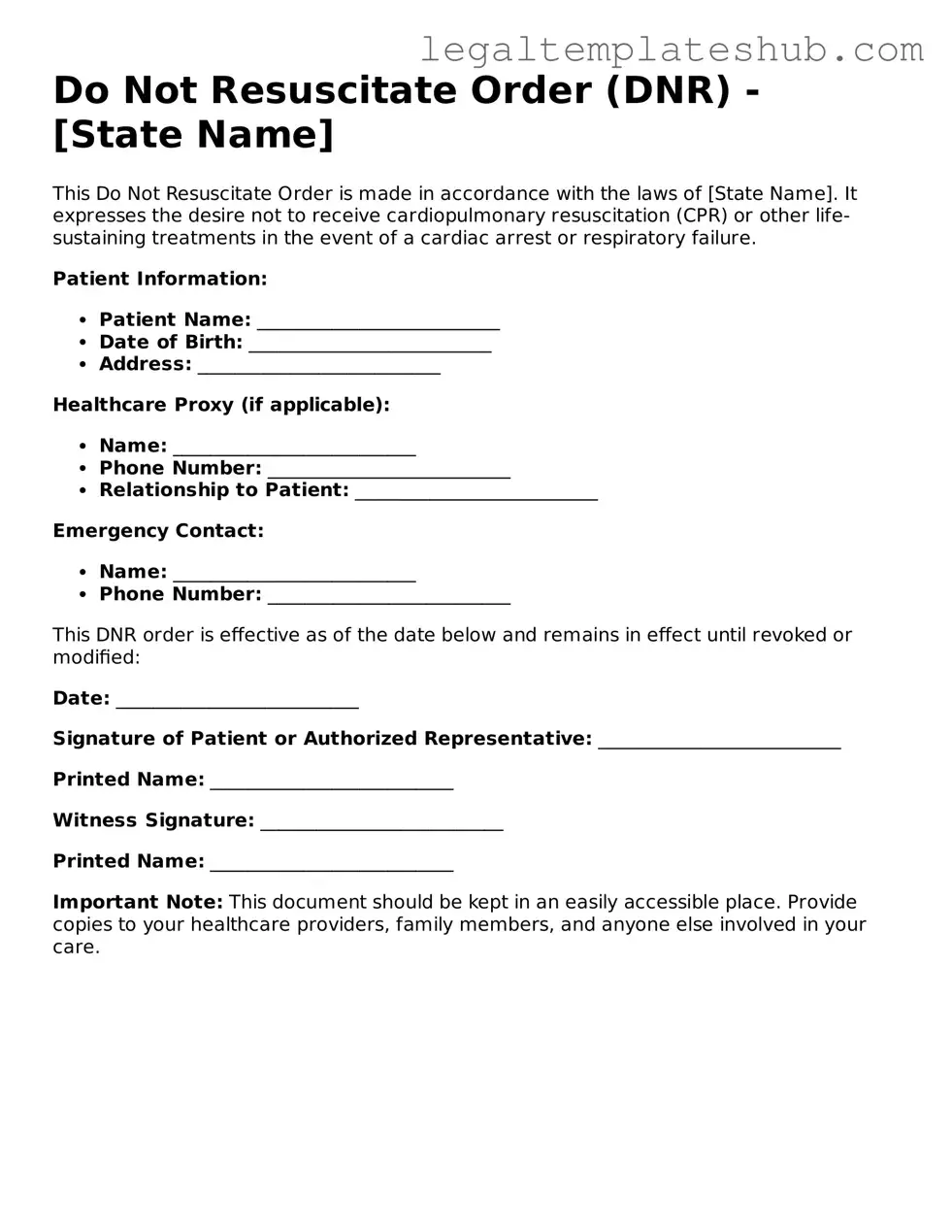Do Not Resuscitate Order - Adapted for State
Instructions on Filling in Do Not Resuscitate Order
Filling out a Do Not Resuscitate (DNR) Order form is an important step in expressing your healthcare preferences. This process allows you to communicate your wishes regarding medical treatment in emergency situations. To ensure clarity and accuracy, follow the steps outlined below.
- Obtain the DNR Order form from a healthcare provider or relevant authority.
- Begin by entering your full name at the top of the form.
- Provide your date of birth, ensuring it matches official identification.
- List any known medical conditions that may influence your decision.
- Clearly state your wishes regarding resuscitation in the designated section.
- Include the name and contact information of your healthcare proxy, if applicable.
- Sign and date the form at the bottom to validate your choices.
- Have a witness sign the form, if required, to confirm your intent.
- Make copies of the completed form for your medical records and loved ones.
Once the form is filled out, it is crucial to discuss your decisions with your healthcare provider and family members. This ensures that everyone understands your preferences and can advocate for your wishes when necessary.
